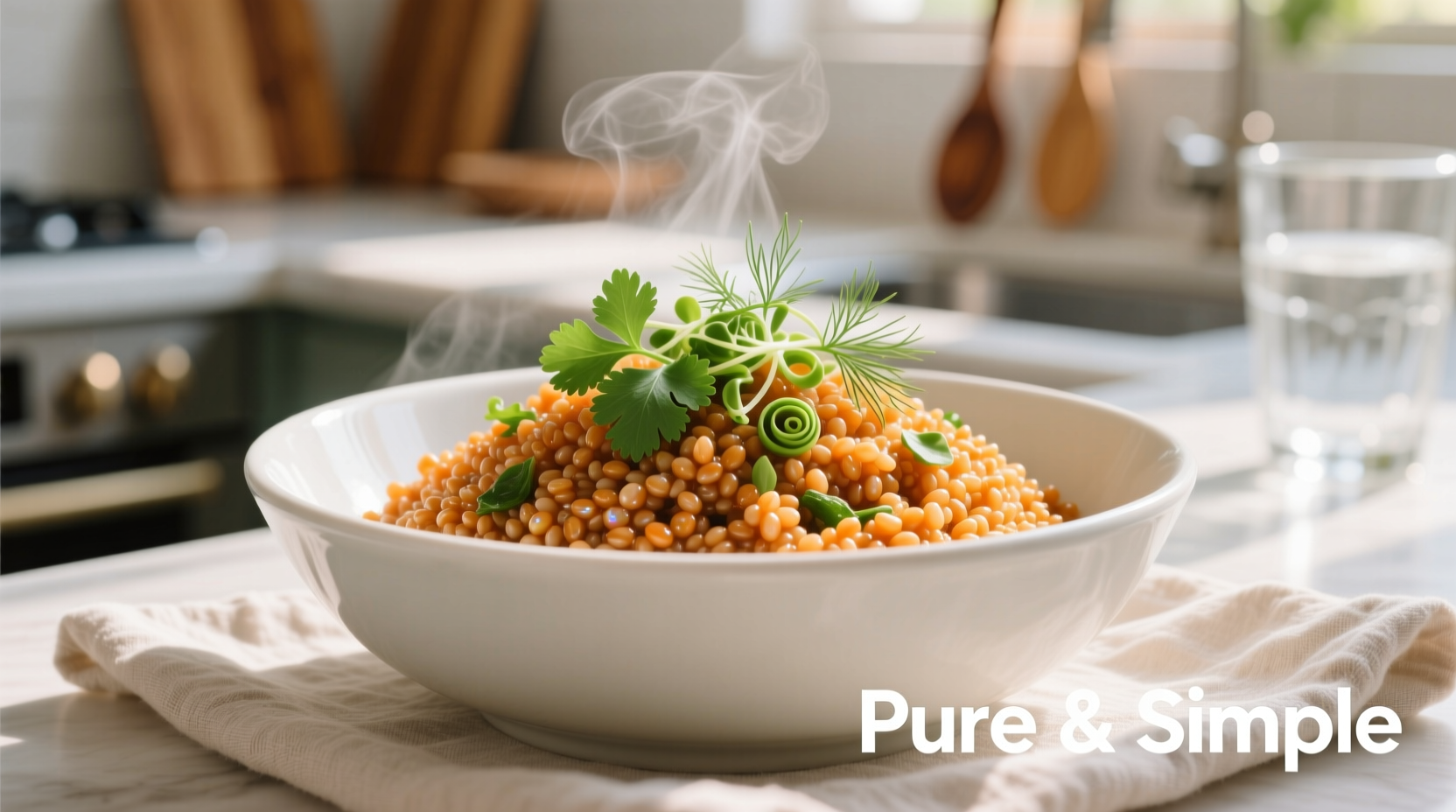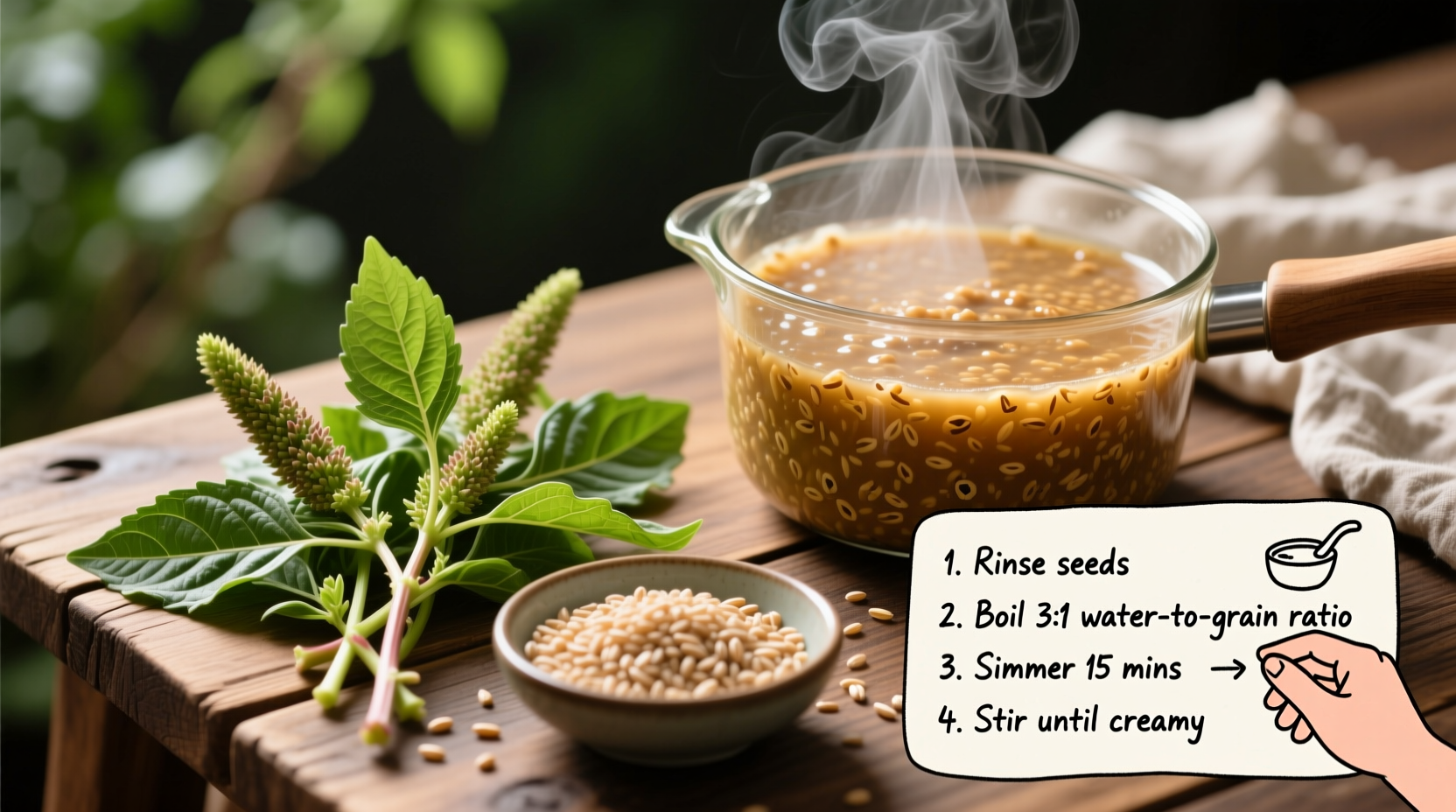Use a 1:2.5 ratio of amaranth to water for perfect results every time. Rinse thoroughly, simmer covered for 20 minutes, then let steam for 10 minutes. This ancient grain transforms into a nutritious, protein-rich staple with a nutty flavor and fluffy texture when cooked properly—no more mushy or undercooked batches.
Discover the complete guide to cooking amaranth with professional techniques that guarantee perfect texture and flavor. As an ancient grain cherished by pre-Columbian civilizations, amaranth offers exceptional nutrition and culinary versatility when prepared correctly. This guide reveals the precise methods trusted by chefs and home cooks alike to transform this tiny seed into a delicious, nutrient-dense addition to your meals.
Why Amaranth Deserves Your Kitchen Spotlight
Amaranth isn't technically a grain but a pseudo-cereal from the same family as quinoa and spinach. This nutritional powerhouse contains 9 grams of complete protein per cooked cup, making it one of the few plant foods with all nine essential amino acids. According to USDA FoodData Central, amaranth also delivers 5 grams of fiber and significant amounts of magnesium, iron, and calcium per serving—outperforming many traditional grains in nutritional density.
Historically, amaranth sustained ancient civilizations across Mesoamerica. Archaeological evidence from the National Geographic Society shows Aztec warriors consumed "alegría" ("joy" in Spanish), a sweet amaranth and honey confection, for strength during long marches. Understanding this cultural heritage helps us appreciate why proper preparation matters—these ancient cultures developed specific techniques to maximize both nutrition and palatability.

Essential Prep Work: Setting the Stage for Success
Rinsing amaranth isn't optional—it's essential. The tiny seeds contain natural saponins, a bitter compound that protects the plant in nature. Skipping this step guarantees unpleasant results. Place amaranth in a fine-mesh strainer and rinse under cold water for 1-2 minutes, gently rubbing the seeds between your fingers until the water runs clear.
Unlike quinoa, amaranth doesn't require soaking, but a 15-minute soak can reduce cooking time slightly and improve digestibility. After rinsing, drain thoroughly—excess water alters your cooking ratio and leads to mushy results. Always measure amaranth by volume after rinsing, not before, as water retention affects the actual seed quantity.
Mastering the Stovetop Method
The traditional stovetop approach delivers the most consistent results for how to cook amaranth properly:
- Combine 1 cup rinsed amaranth with 2.5 cups water or broth in a medium saucepan
- Add a pinch of salt (and optional aromatics like garlic or bay leaf)
- Bring to a boil over medium-high heat
- Reduce heat to low, cover tightly, and simmer for exactly 20 minutes
- Remove from heat and let stand, covered, for 10 minutes
- Fluff gently with a fork before serving
Timing precision matters—amaranth transitions from perfectly cooked to mushy in just 2-3 minutes. The 10-minute resting period allows residual steam to complete the cooking process without overcooking. Properly cooked amaranth should have a slightly chewy texture with individual grains distinct yet tender.
| Cooking Method | Water Ratio | Cooking Time | Best For |
|---|---|---|---|
| Stovetop | 1:2.5 | 20 min + 10 min rest | All-purpose cooking |
| Rice Cooker | 1:2.25 | "White Rice" cycle | Hands-off preparation |
| Pressure Cooker | 1:1.75 | 7 min + 15 min natural release | Meal prep efficiency |
Troubleshooting Common Amaranth Texture Problems
Even experienced cooks encounter texture issues with amaranth. Understanding context boundaries helps you adjust:
- Mushy amaranth: Usually caused by excess water or overcooking. Reduce water ratio to 1:2.25 next time and check 2 minutes early
- Crunchy amaranth: Needs more liquid or cooking time. Add 2-3 tablespoons water and return to low heat for 3-5 minutes
- Sticky texture: Indicates insufficient rinsing. Always rinse until water runs clear to remove saponins
- Flat flavor: Amaranth benefits from proper seasoning. Cook with broth instead of water and finish with acid like lemon juice
For porridge applications (like the traditional Mexican atole), use a 1:3 water ratio and cook uncovered for 25 minutes, stirring occasionally. For pilaf-style dishes where grains should remain separate, toast rinsed amaranth in 1 teaspoon oil for 2 minutes before adding liquid.
Flavor Pairing Strategies for Maximum Enjoyment
Amaranth's mild, nutty flavor adapts beautifully to both sweet and savory applications. Professional chefs recommend these pairing principles:
- Savory applications: Complement with roasted vegetables, mushrooms, or black beans. Finish with fresh cilantro and lime
- Sweet preparations: Enhance with cinnamon, vanilla, or toasted coconut. Try the ancient Aztec method with honey and toasted seeds
- Texture contrast: Add crunch with toasted pumpkin seeds or slivered almonds after cooking
- Acid balance: A splash of apple cider vinegar or lemon juice brightens the earthy notes
For meal prep efficiency, cook a large batch using the pressure cooker method, then store in airtight containers. Properly stored amaranth maintains texture for up to 5 days in the refrigerator or 3 months frozen—unlike many grains that become gummy when reheated.
Advanced Techniques for Culinary Excellence
Elevate your amaranth cooking with these professional techniques:
- Toasting method: Dry-toast rinsed amaranth in a skillet for 3-4 minutes until fragrant before adding liquid for deeper nuttiness
- Broth infusion: Replace 25% of cooking liquid with mushroom or vegetable broth for umami richness
- Layered seasoning: Add aromatics to cooking liquid, finish with fresh herbs and acid after cooking
- Texture preservation: When adding to soups or stews, stir in cooked amaranth during the last 5 minutes to maintain integrity
Understanding amaranth's unique properties explains why standard grain cooking methods often fail. Unlike rice or quinoa, amaranth releases a natural starch during cooking that creates a slightly sticky texture—this isn't a mistake but a characteristic to work with. The key is controlling this starch release through precise water ratios and timing.
Storage and Reheating for Perfect Leftovers
Proper storage maintains amaranth's texture far better than most grains. Cool cooked amaranth completely before storing in airtight containers. Refrigerated amaranth stays fresh for 5 days, while frozen portions maintain quality for 3 months.
Revive leftovers with these professional reheating methods:
- Stovetop: Add 1 tablespoon water per cup amaranth, heat over medium-low while stirring gently
- Steamer: Place in a covered bowl over simmering water for 5-7 minutes for most texture retention
- Skillet method: For crispy texture, spread in a thin layer with oil and cook until golden
Avoid microwave reheating when possible—it often creates uneven texture. When necessary, use 50% power and check every 30 seconds to prevent rubberiness.











 浙公网安备
33010002000092号
浙公网安备
33010002000092号 浙B2-20120091-4
浙B2-20120091-4